
// SEMESTER
WS 2021/2022 IG7
// MODULE
Bachelorthesis
// Team
Hana Amer
Alina Mötsch
// TOOLSTACK
Miro
Figma
Notion
After Effects
// DESIGN PROCESS

// GOAL
In this thesis, possibilities of preventive education and digital immediate help for postpartum depression (PPD) will be elaborated. The focus is on various sub-concepts of interaction design that are intended to function as motivational guidance and support. Examples would be the diagnosis, the inclusion of already recovered persons and their experiences as well as the transfer of proven therapy approaches into the telemedical field.
The holistic solution is not intended to be an additional burden, but can be used individually by those affected. For example, general education can create contextual awareness, making it possible to prevent moderate to severe courses of postpartum depression.
// HOW MIGHT WE
How can we catch those affected by PPD and offer them quick and easy therapeutic help.
// POSTPORTUM DEPRESSION
Postpartum depression (PPD) is the most common mental illness in women after childbirth. It presents a specific clinical picture with depressive symptoms, classically in the mother, but secondarily in partners. PPD is rotten after birth until the 1st year of life and is clearly distinguished from the baby blues. Every year, every 10th woman and every 20th man is affected. The tendency is increasing.

// CAUSES
There is no exact cause of PPD. As with normal depression, it is an interaction of various events and/or experiences. Triggers can be early childhood experiences, a problematic pregnancy or traumatizing experiences during birth. An excessively long birth with a lot of blood loss or the hormonal imbalance and general adjustment of the body after childbirth can be just as responsible as psychological or familial previous stresses. Since the symptoms can vary in number and degree depending on the individual, initial diagnosis can be difficult. In addition, those affected often remain silent out of a sense of shame and fear of possible consequences, or cover up their own feelings for as long as possible. For this reason, a diagnosis is made too late in most cases, should PPD be recognized at all.
// INTERVIEWS

// PROBLEMATIC
Here we've listed the problems that we would like to
solve directly and indirectly with our concept:
[1] lack of education
[2] lack of preparation for postpartum and parenthood
[3] insufficient pre- and postpartum care by midwife
[4] mediation & finding help
[5] long waiting times for therapy
[6] lack of network
[7] effects of depressive illnesses
// NEEEDS
During interviews we identified the following most important needs and wishes:
[1] Exchange with other sufferers or former sufferers
[2] Information and professional expertise
[3] Mechanisms for better management of PPD
[4] Timely support and therapeutic assistance
[5] Destigmatization around the topic of PPD

// WIREFRAMES
Based on the concept and the use cases, low-fidelity wireframes were low-fidelity wireframes were created. The first drafts of the concept The goal was to roughly visualize the concept and to check for comprehensibility.
// USER TESTING

// USER TESTING 1
The usability of the product is to be examined with the user test. Not the whole product is tested but 4 different use cases. Usability test 1 was tested with 6 adults between the ages of 24 and 35. A low-fidelity prototype was tested for usability in different scenarios. The usability test generally went as expected. Some uncertainties and questions could have been solved by the mapped content. The choice of words also caused some confusion. The usability and information architecture were understood across the board.
// USER TESTING 2
The usability test was tested with 5 (former) sufferers of postpartum depression. Thereby selected screens were shown to test the comprehension. The usability test was generally very positive. Design decisions were very well received and praised. Especially that no photos were used and the photos were used and the choice of colors, although striking was described as positive. The solution with its content and usability was understood. Criticism was occasionally voiced with regard to the wording.
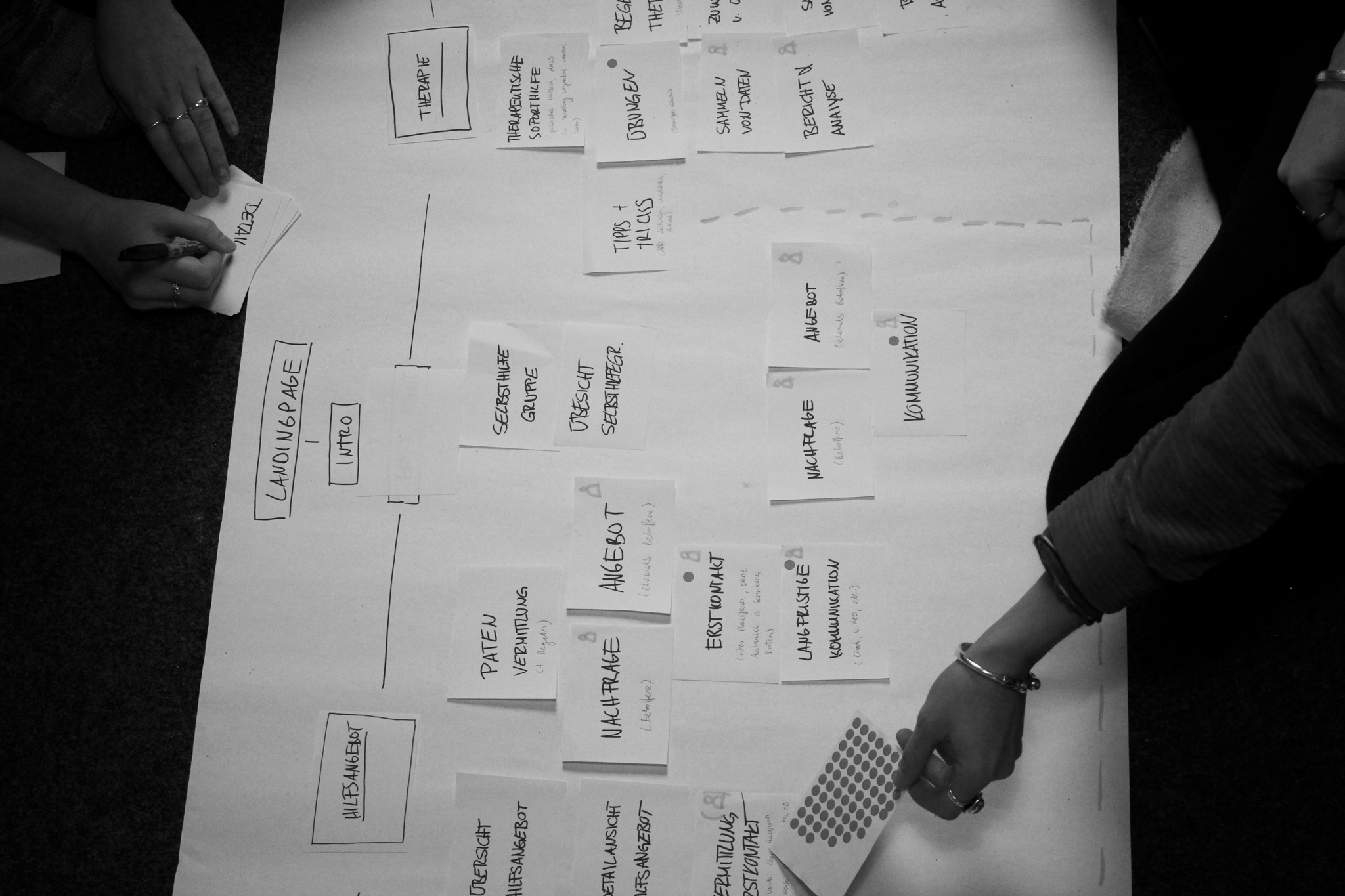
// STRUCTURE
The information architecture was created to constructu and avoid dead ends. This consists of 3 components:
[1] Website information architecture
[2] App information architecture
[3] Expert tool information architecture
The information architectures are listed below.
// STRUCTURE WEBSITE
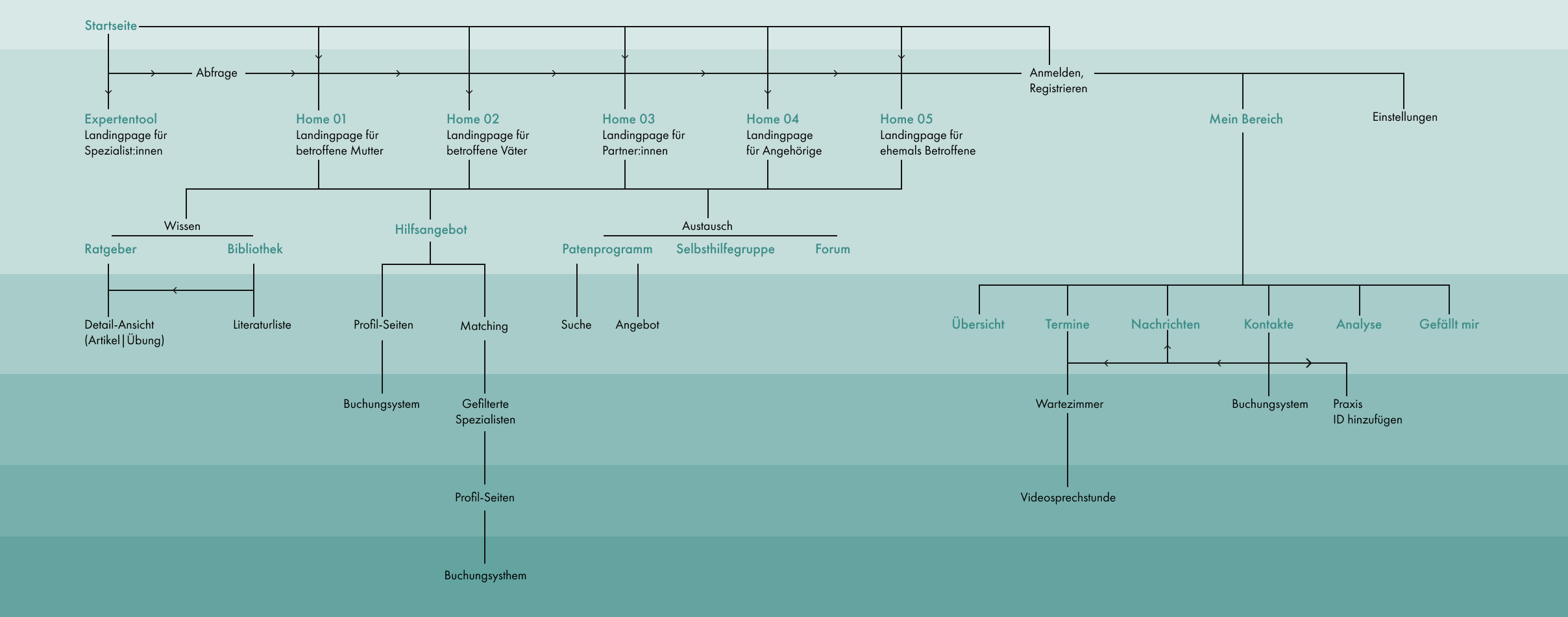
// STRUCTURE APP

// STRUCTURE TOOL
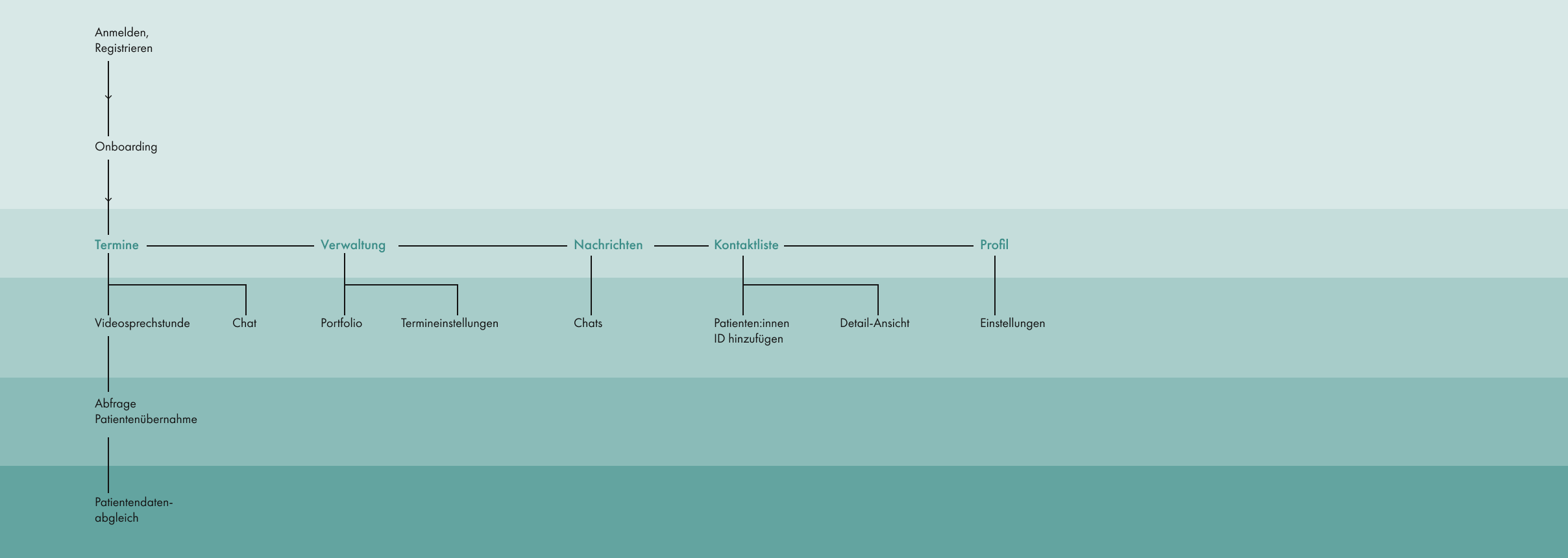
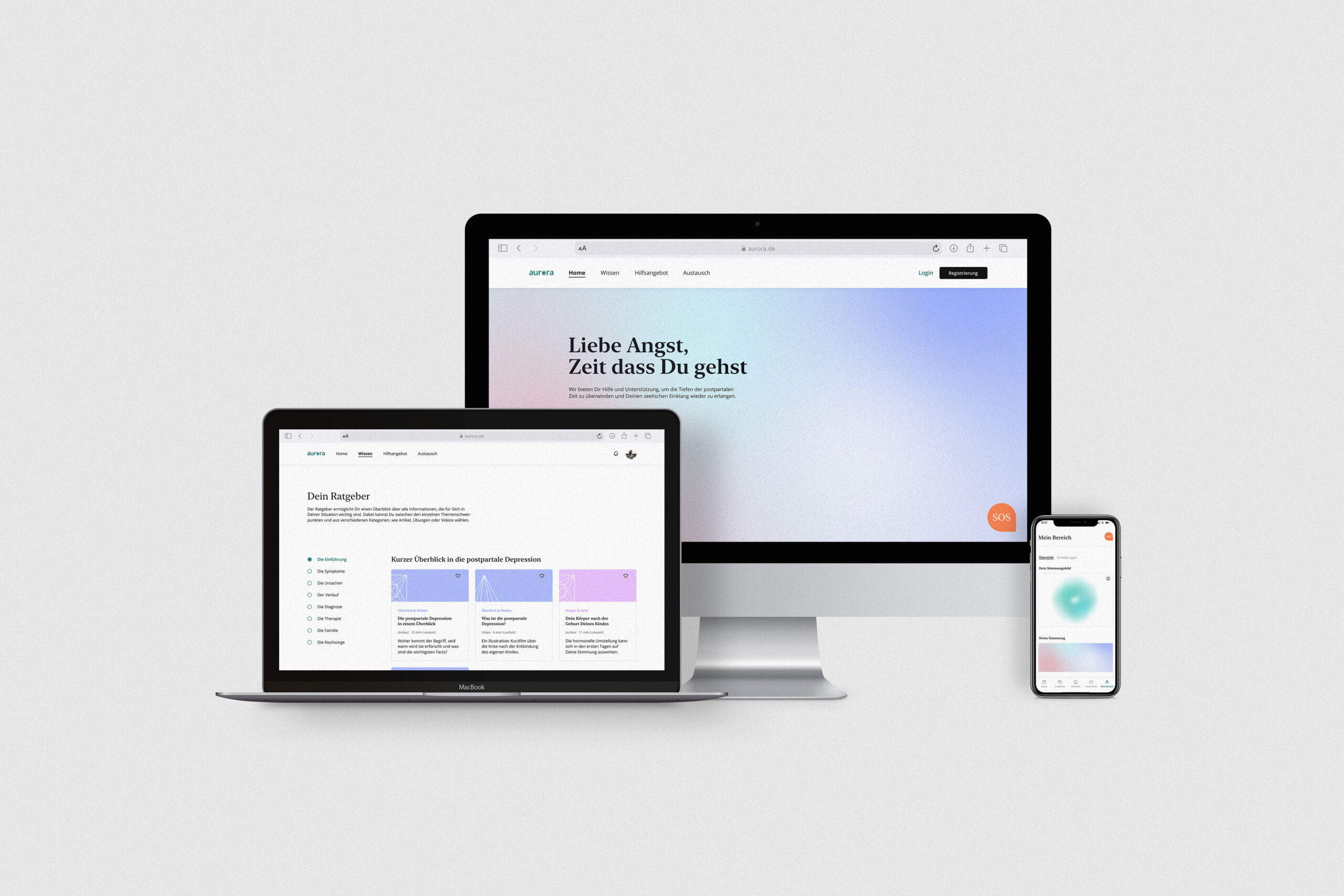
// AURORA
Aurora is a platform for those affected by postpartum depression and their environment. The mental imbalance after the delivery of one's own child is widespread, goes far beyond the well-known baby blues and requires more attention than is currently available. The solution addresses the previous problem areas surrounding the condition: Via interconnected partial solutions consisting of a website and an application, users are offered content individually tailored to their user group.
// FINAL PRODUCT
// HOMEPAGE
Since the topic of postpartum depression is perceived differently and care differently depending on the user group the website makes it possible to offer a completely individually tailored offer per user group. In the individual journey, users choose which group they belong to, to which group they feel they belong and thus arrive at their and thus arrive at the individual offer, which is further explained in more detail on the following page.
// LANDINGPAGE
This brief description is intended to give those affected a brief overview of postpartum depression, classify it and distinguish it from the baby blues. Thus can better understand their situation. In the short introductory video, other sufferers tell about their experience with postpartum depression.
The edinburgh postnatal depression scale self-test (EPDS) is already described in detail in the research part of this documentary. They should have the opportunity to take the test right away, in order to test to better assess the degree of their situation.
The self-assessment of one's own situation is usually talked down by those affected. The classification of the emergency by listing three possible offers of help. So they can choose which offer of help would best help them now.
// GUIDEBOOK
A guide with guided information, consisting of articles, experience reports, self-therapeutic exercises and videos, provides in a low-threshold way all the knowledge that is crucial for understanding one's own situation and acquiring the necessary skill set. In this way, users are provided with a comprehensive and central source of information to help them deal with their own situation in the best possible way and to bridge a possible waiting period for a therapy place.
// GODPARENT PROGRAM
The godparent program with an individual mediation enables a direct exchange with formerly affected persons who have an open ear for worries and fears. Since the close environment often reacts with incomprehension and those affected tend to overplay their own situation, this offers the possibility of exchanging information with external persons who have had similar experiences.
// ONLINE THERAPY
Via a private profile, users can link up with specialists in their field, book appointments online and participate in online consultations. The directory with verified specialists saves the tedious search through medical portals and provides an overview of available therapy places.
// MY AREA
The profile also provides an overview of the user's own disease progression, which is presented visually. Here, users can also be in contact with their personal godmother or godfather and the linked specialists via direct messages.
// ATMOSPHERE
The atmosphere is available in 5 modes. The evaluation serves as a therapeutic method and should help to consciously deal with one's own feelings on a daily basis. The visualization shows the result (dark - light) and should motivate at the same time, but above all have a calming effect on those affected.
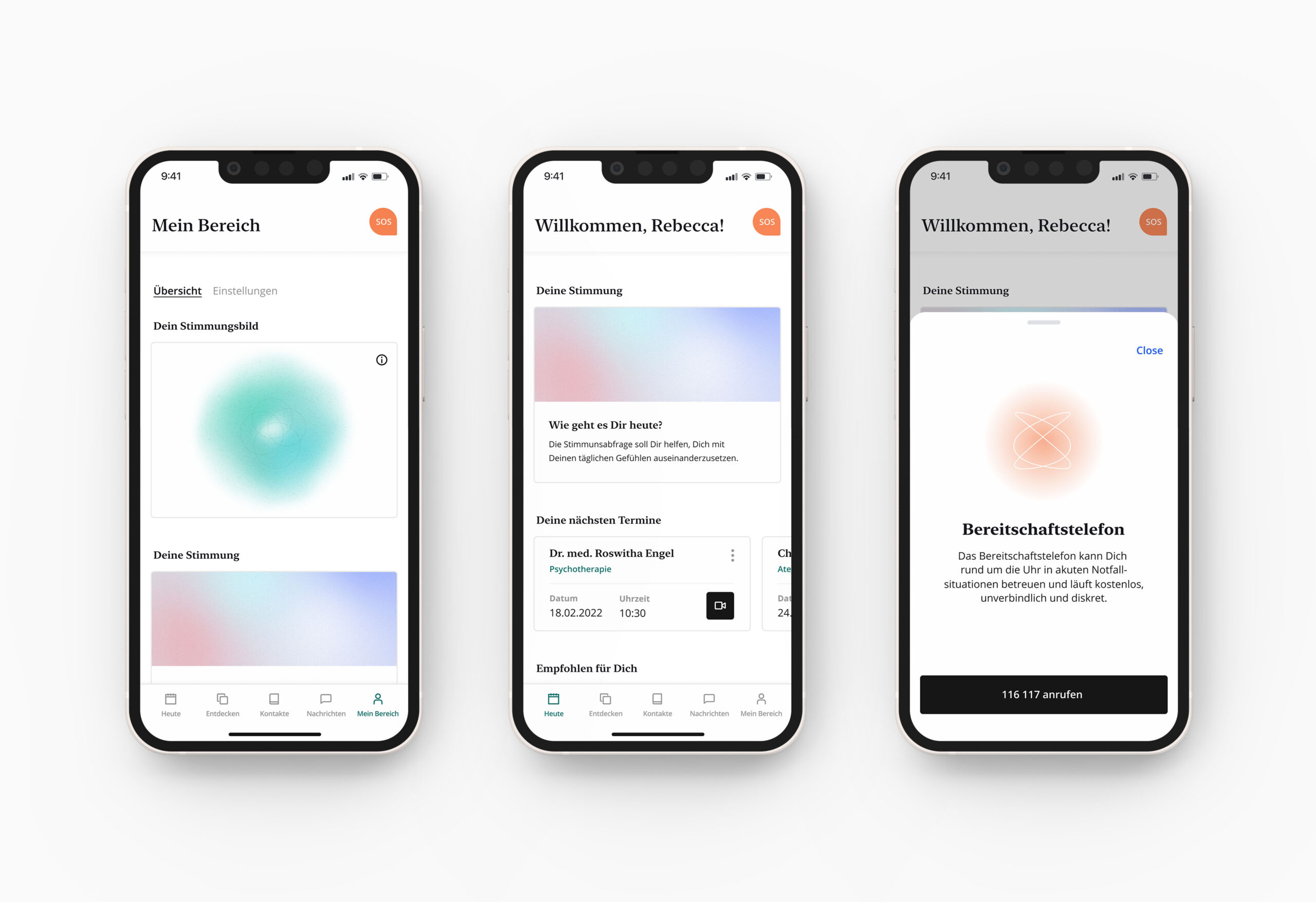
// APP
The application can be seen as a supplement to the website. Since people affected by postpartum depression have a special context of use. Certain content must be accessible via a cell phone.
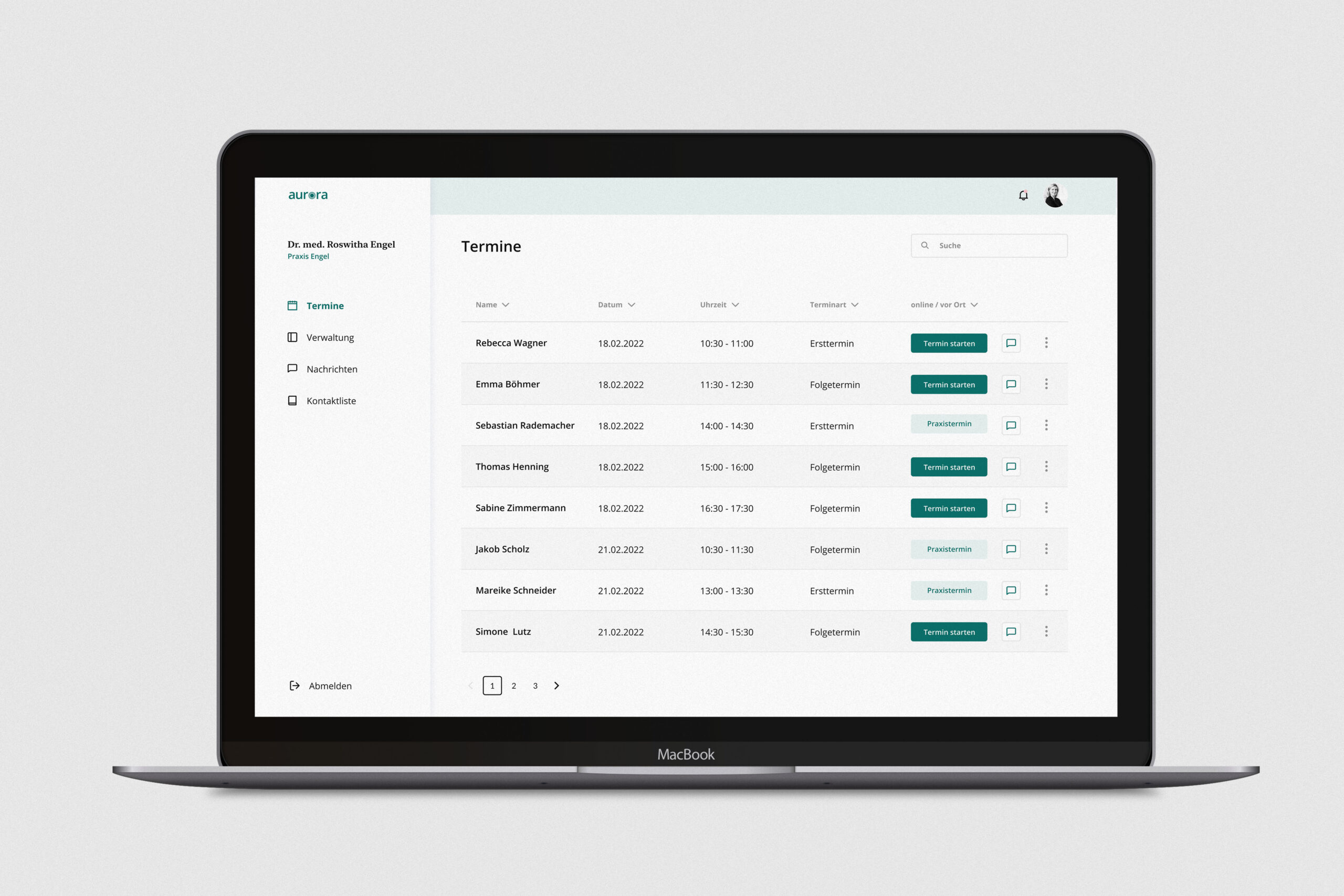
// EXPERT APPLICATION
The tool for specialists is an external desktop application, which can be downloaded via registration on the website.
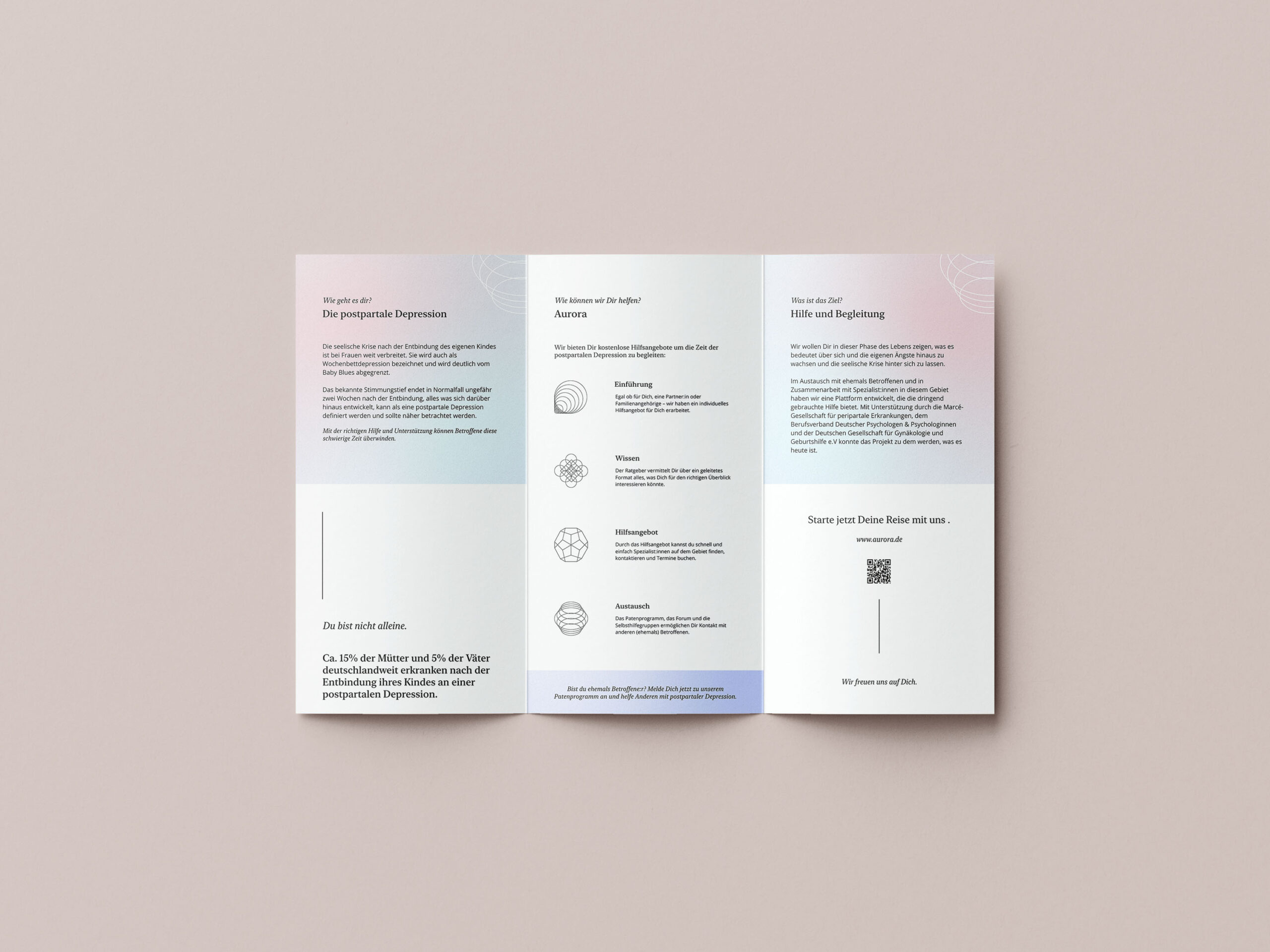
// CAMPAIGN
In order to reach users in the best possible way and draw their attention to the solution, a campaign was also designed. This consists of an informative flyer that can be displayed in practices; a small note that can be printed on food for infants; and an Instagram account that is primarily designed for young, digitally affine people.
// CONCLUSION
Apart from the solution, medical screenings, better care and clear areas of responsibility in the field of postpartum conditions should be introduced today and create a basis for comprehensive care of affected persons for tomorrow. In real terms, it could help those affected and provide preventive education to parents and other stakeholders.
Involving other groups of people, such as midwives and doulas, better networking and an exchange of expertise among specialists could counteract the problem of postpartum diseases. We believe that we have taken a small step in the right direction with our concept.
made by Jasmin Klement
